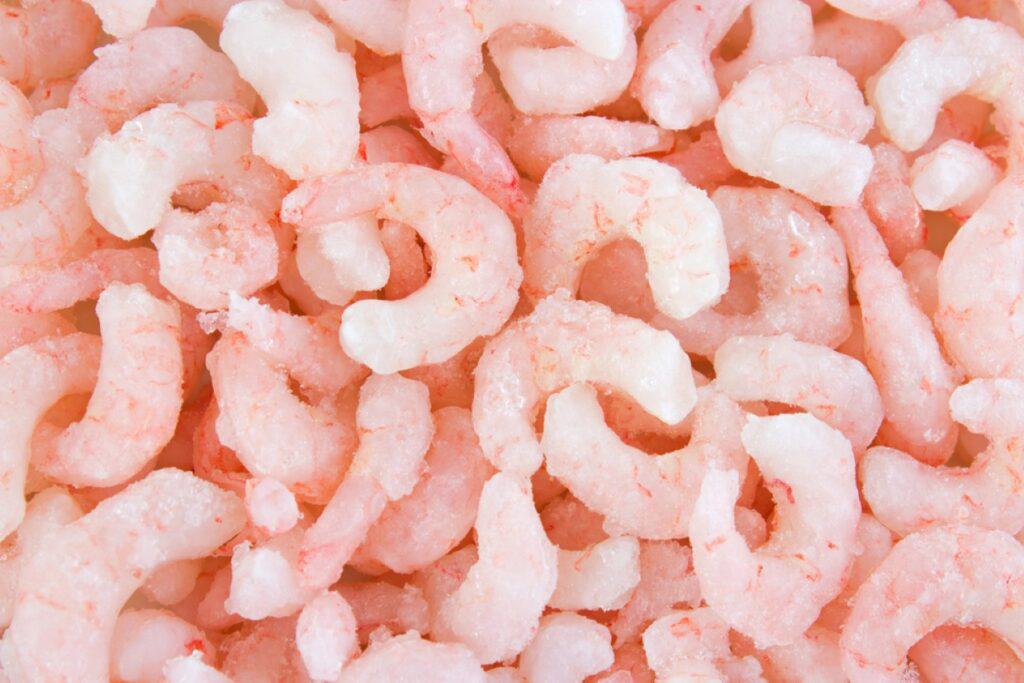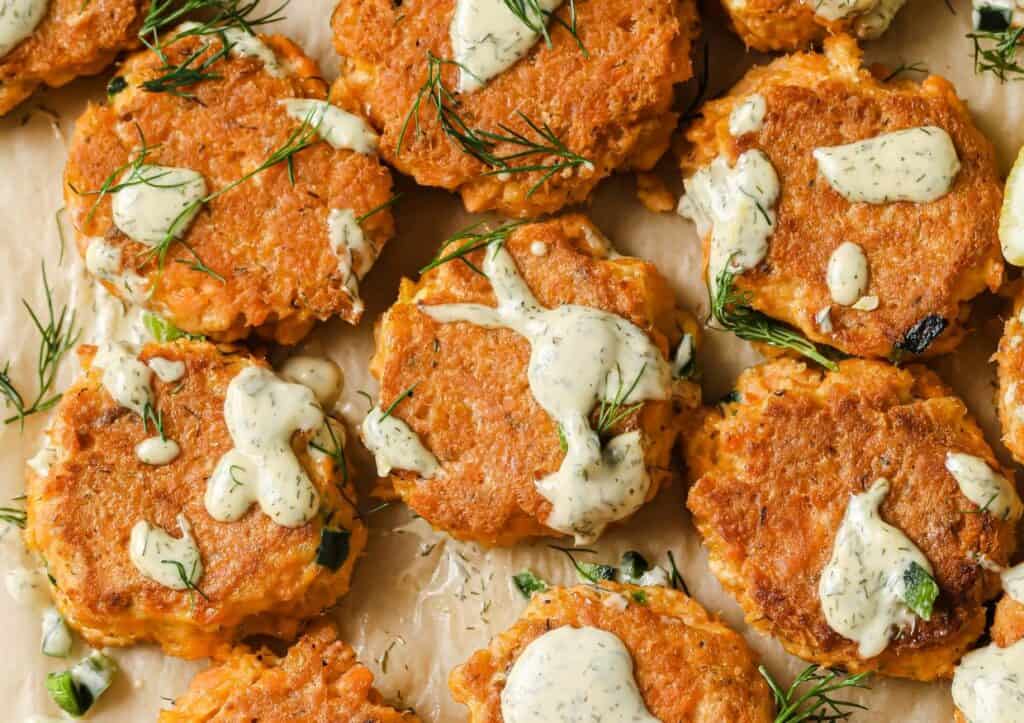Eating seafood doesn’t have to be expensive for it to still taste luxurious. By making smart choices at the store and cooking different dinners at home, it’s easier than ever to eat like royalty.

The right recipes and a few clever ingredient swaps can open up a huge platter of culinary possibilities. Seafood isn’t just for special events or rare treats anymore. By following a few tips, it’s easy to incorporate seafood into a weekly menu and stay within budget at the same time. All it takes is some planning and smart shopping to begin enjoying fish and shrimp in more meals.
Cook with canned seafood
One of the best ways to save money on groceries is to buy canned seafood instead of fresh. Not only is the price lower but buying canned food also cuts down on waste. Canned meat lasts longer than fresh filets, which is more forgiving when things come up, and recipes need to wait a day or two.
Canned tuna
Canned tuna should be a pantry staple. It’s versatile and incredibly budget-friendly. From tuna salad to spicy tuna rolls, there are so many ways to cook with it.
Today, there are even more tuna options to choose from, and each one boasts a different taste and texture. These are the most common types of canned tuna sold in grocery stores.
- Albacore: This one has a light, not very fishy, flavor. Its bright taste goes well in a variety of dishes.
- Skipjack: This kind is often sold as chunk light because of its flaky texture. Unlike albacore, skipjack has a strong fishy flavor.
- Yellowfin: This is pale pink with a mild and almost sweet flavor. It works well in salads and light dishes.
- Bigeye: This variety has a firm texture, so it’s best in casseroles. It’s also less fishy than skipjack.
There is also the choice of oil-packed or water-packed tuna. The way to choose between them is to decide how you will cook them. Water-packed tuna is best for things like tuna patties or spring rolls when the flavor of the fish needs to shine through. Oil-packed tuna is best for salads or wraps when the tuna mixes with a dressing.
Canned salmon
Buying canned salmon is much easier on the wallet than buying fresh fillets — especially for people who don’t live near a fresh fish market. It’s just as versatile as canned tuna and saves time in the kitchen, too, because it doesn’t need to be cooked first.

Since canned salmon is already cooked, it makes recipes a breeze. Things like spicy mini salmon poppers are fun to eat and ready in 30 minutes. Another fantastic thing about canned salmon is that it’s also already chopped. It cuts the prep time down significantly.
Lump crabmeat
There’s also a significant price difference between fresh crab meat and canned lump crab meat. The surprising thing is that it’s tough to tell the difference between them, especially in recipes like crab cakes and crab mac and cheese.
Crab meat is divided into different categories. The most common ones that people buy are jumbo lump and backfin, which are white meat from the main body of the crab. It’s also split up into different grades. Grades can be a bit confusing, so here’s a quick breakdown of what they mean.
- Colossal lump: Also called super jumbo, this type contains large chunks of meat and is the most expensive. It’s known for its rich flavor and firm texture.
- Lump: These are broken jumbo lumps. They are the most common kind you’ll find in cans.
- Backfin: This is made of small broken chunks. It’s also mixed in with white body meat.
It’s important to choose the right recipes when cooking with canned crab meat. It’s higher in sodium, so recipes should call for less salt. In all actuality, canned lump crabmeat is the perfect thing to use in most dishes.
Buy in bulk
It’s no secret that buying anything in bulk will cost less per unit. And the same thing is true with seafood. In fact, it’s easy to find deals on fish at big box stores and at local fish markets. It just takes a little shopping and planning ahead.
Fresh
Living near fresh fish markets can have a lot of benefits. Some places will sell fish by the pound and offer discounts to customers who buy bulk orders. To take advantage of this, get to know the suppliers. They might be willing to broker a deal with you.
When buying bulk seafood, practice safe food storage. Only keep out the amounts that you will cook within the next few days. Then, freeze the extras. Frozen seafood will last about six months.
Frozen
Big box retailers sell frozen shrimp, cod fillets and even scallops at a low price. The good news is that freezing seafood doesn’t diminish the flavor. It’s just as delicious as fresh.

One of the best things about buying bulk frozen seafood from places like Costco or Sam’s Club is that they put frozen food on sale. Pay close attention to the ads and grab the meat when it’s discounted. It’s the easiest way to save money.
Cook once eat twice
Another way to make seafood stretch further is to save leftovers and reuse them in different recipes. This is called the cook once eat twice strategy. It requires some meal planning, but it cuts down on food waste. Using this method with salmon, shrimp and crab is easiest.
Salmon ideas
After cooking the salmon fillets, save the leftovers. Chop the salmon into small pieces and use it again in a salmon salad bowl, a poke bowl or an omelet. On busy mornings, add the chopped salmon to some eggs and make a high-protein scramble.
Basically, start out with the salmon fillets, chop them up and use them again in new recipes. Cooked salmon will stay fresh in the refrigerator for up to four days.
Shrimp recipes
Shrimp is one of the easiest types of seafood to use again because it’s so versatile. After grilling shrimp, reheat it later in the week and use it in shrimp tacos. Or chop it up and make shrimp salad.
Remember, cooking with leftover shrimp is easier when it’s unbreaded. Popcorn shrimp will taste delicious in shrimp tacos, but the recipe choices dwindle when shrimp is breaded.
Crab ideas
Crab is also super adaptable, making it a perfect choice to use later in the week. If the first recipe of the week is a soup or salad, then cook extra crab meat and store it in the refrigerator.
Crab cakes are the most popular way to use leftover crabs. But crab melts are also super delicious. Don’t forget about crab chowder and crab-stuffed mushrooms.
Ingredient swaps
It’s ok to indulge in rare or expensive types of seafood. To stay within a budget, though, making a few ingredient swaps will save money. The best part is that it’s almost impossible to taste the difference.
Cod instead of red snapper
Cod fillets have a taste and mouthfeel similar to the more expensive red snapper. This is one of the easiest budget-friendly swaps home cooks can make, “Especially when using fish as part of a recipe like seafood stew or a pasta dish,” shares Kelly Stilwell from Food, Fun & Faraway Places. “It really doesn’t make sense to pay top dollar for the expensive varieties.”
Cod can be hit or miss when it comes to frozen quality. That’s why beginning cooks should stick to the easier choice of tilapia. It’s a light and flaky fish that anyone can make.
Tilapia instead of salmon
Tilapia has a mild flavor that pairs well with any herbs or spices in a variety of different recipes. One of the best things about it is that it’s easy to find in grocery stores for a low price. Plus, it doesn’t taste overly fishy like cod does.
This freshwater fish tastes delicious grilled, pan-fried or breaded and baked. It is the perfect choice for anyone who doesn’t like the taste of fish. Add some lemon slices and fresh herbs to it, and it is a lean protein that elevates dinner to a fancy affair.
Salmon collars instead of fillets
It’s easy enough to still enjoy salmon on a budget; just buy the collars instead of fillets. What are salmon collars? They are the meat that is behind the gills. It includes the collarbone and the fatty belly meat. Some fishermen use it as bait, but it’s delicious in recipes, too.
It might be tough to find salmon collars in the grocery store. As Jessica Haggard from Primal Edge Health shares, “Ask your local fisherman or fishmonger for these off-cuts. They are usually tossed aside, but you can get them at a great price if you ask.”
Make it stretch
Rethink seafood recipes and make the protein a supporting character instead of the star of the show. Pasta, rice and potatoes cost significantly less than shrimp and crab, so meals should be built around starches and vegetables first. This makes that dollar go so much further.
Cook soups or stews
A savory seafood soup is the ultimate comfort food. It’s rich and aromatic and surprisingly cheaper than takeout. Frugal cooks, like Sarita Harbour from Recipes From Leftovers, know that the best way to stretch a dollar is to make a hearty soup, “Buy fillets on sale, then choose recipes that can stretch. For example, chowders, soups, stews and even pasta dishes and casseroles can feed a crowd with just three to four chopped fish fillets.”
There are endless amounts of recipes to choose from. Use one kind of fish — like clam for clam chowder. Or use a bunch of different types of seafood in an easy seafood stew. From rich and creamy to light and brothy, this is the easiest way to enjoy seafood on a budget.
Add to pasta
Pasta is another simple option. When cooking pasta dishes, it doesn’t take very much seafood to make a fancy and filling meal. This is because the pasta makes the bulk of the dish. It only requires a sprinkling of lobster or crab to enhance it.
Some of the most popular pasta dishes are shrimp scampi and lobster mac and cheese. Some cooks even make spaghetti with clams or risotto with mussels. Be creative and have fun with it.
Make tacos
For fish, salmon, shrimp and even crab, it’s easy to find a taco recipe. Taco shells and toppings are affordable. Then, it takes just a little bit of seafood to make it a complete meal.
Sides like white rice or cauliflower rice are also in the lower price range, too. With just a few extra ingredients, anyone can put together a filling and refreshing seafood taco meal.
Enjoy more seafood
Indulging in seafood regularly without overspending involves choosing the right recipes, reusing leftovers and shopping smart. To lower the cost of each meal, use different types of fish or decide which recipes to make based on the current sales.
Making home-cooked seafood can become a regular affair instead of a rare treat. By discovering how to make canned seafood taste fresh and incorporating shopping hacks, things like fish and crab are easier to afford. It might take time and planning, but the payoff is worth it.
Sara Nelson is the creator of Real Balanced, a food blog that showcases easy and balanced recipes. Since 2017, she has shared these recipes with thousands of blog readers and social media followers. Sara lives in Wisconsin with her family.